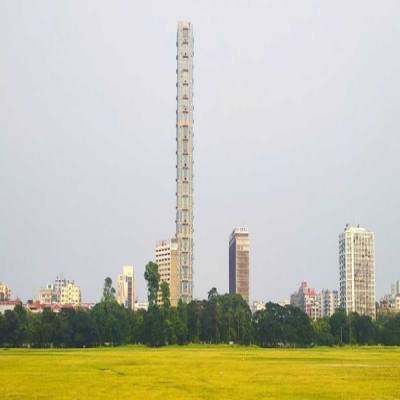- Home
- Real Estate
- Smart evolution

Smart evolution
Smart buildings are self-sustained and fully equipped automation buildings driven by smart controllers where the various systems interact with each other in the most energy-efficient manner. They achieve their mission of high energy conservation by an optimal integration of the building structure with its MEP and IBM systems. Sustainability and energy consumption are critical to smart measurement in buildings, but there are various other measures of building performance. These include heat reduction system, glazing systems, solar energy, parking systems, indoor environment quality, grey water management and rainwater harvesting.
Case in point
Godrej BKC is a Grade A international commercial green building, designed for LEED Platinum certification. Features include photovoltaic panels installed at the terrace level to ensure lighting of common areas; automated smoke vent on façade working on actuators; hybrid system for HVAC (a combination of water-cooled centrifugal chillers and air-cooled chillers); fully automated robotic car parking; and high-performance super clear glass on facade with sunshades to mitigate glare. This project can be expected to be among the finest examples of construction, implementation and execution of a smart building in India. It is an integration of aesthetics and technology. It maximises energy savings and reusing of natural resources. Designed to allow maximum natural light with the least negative impact of direct sunlight, it boosts energy savings. Storm-water reuse makes the building´s water requirement self-sustained and contributes to the environment along with the building´s unique landscaping, thus setting new standards for eco-friendly design.
Changing dynamics
Technology, aesthetics and environment have a huge play in the way buildings have evolved. Smart buildings integrate all these and many more factors. And they still keep changing and advancing to conserve more energy, reduce costs, preserve the environment and provide highest standards of living and safety. Some obvious factors that show how buildings have evolved from conventional and green buildings to smart buildings are:
- Air-conditioning is designed to consume less energy.
- Building designs have changed to reflect smart and use technology to that effect.
- Solar systems are used more.
- Fire safety measures have peaked and advanced.
- Buildings allow more natural light and use better lights that create a natural feel and keep the temperatures regulated as well.
- Discharge water in all forms is purified and reused.
"Technology, aesthetics and environment have a huge play in the way buildings have evolved."
Integrating technology, aesthetics and environment, smart buildings are become increasingly efficient, says SHEKHAR PATKI, Principal Architect, PG Patki Architects. Smart buildings are self-sustained and fully equipped automation buildings driven by smart controllers where the various systems interact with each other in the most energy-efficient manner. They achieve their mission of high energy conservation by an optimal integration of the building structure with its MEP and IBM systems. Sustainability and energy consumption are critical to smart measurement in buildings, but there are various other measures of building performance. These include heat reduction system, glazing systems, solar energy, parking systems, indoor environment quality, grey water management and rainwater harvesting. Case in point Godrej BKC is a Grade A international commercial green building, designed for LEED Platinum certification. Features include photovoltaic panels installed at the terrace level to ensure lighting of common areas; automated smoke vent on façade working on actuators; hybrid system for HVAC (a combination of water-cooled centrifugal chillers and air-cooled chillers); fully automated robotic car parking; and high-performance super clear glass on facade with sunshades to mitigate glare. This project can be expected to be among the finest examples of construction, implementation and execution of a smart building in India. It is an integration of aesthetics and technology. It maximises energy savings and reusing of natural resources. Designed to allow maximum natural light with the least negative impact of direct sunlight, it boosts energy savings. Storm-water reuse makes the building´s water requirement self-sustained and contributes to the environment along with the building´s unique landscaping, thus setting new standards for eco-friendly design. Changing dynamics Technology, aesthetics and environment have a huge play in the way buildings have evolved. Smart buildings integrate all these and many more factors. And they still keep changing and advancing to conserve more energy, reduce costs, preserve the environment and provide highest standards of living and safety. Some obvious factors that show how buildings have evolved from conventional and green buildings to smart buildings are: Air-conditioning is designed to consume less energy. Building designs have changed to reflect smart and use technology to that effect. Solar systems are used more. Fire safety measures have peaked and advanced. Buildings allow more natural light and use better lights that create a natural feel and keep the temperatures regulated as well. Discharge water in all forms is purified and reused. "Technology, aesthetics and environment have a huge play in the way buildings have evolved."



















